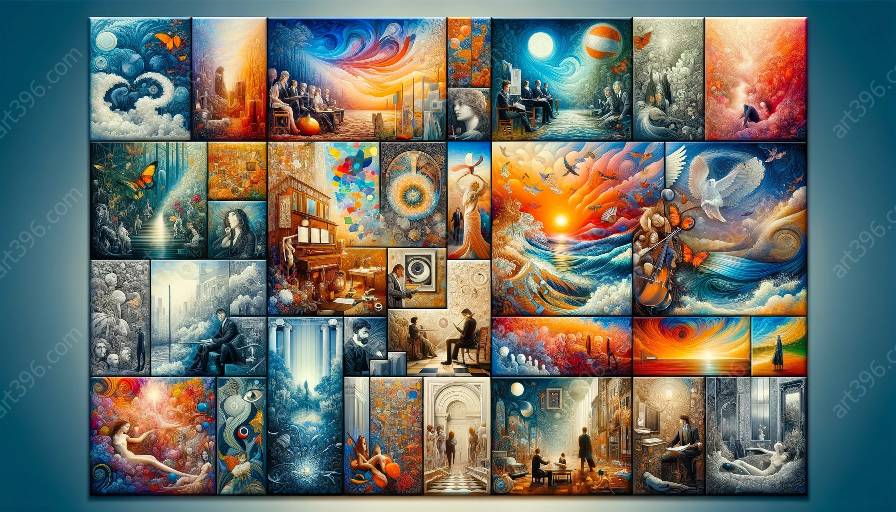Art Nouveau, a popular art movement that emerged in the late 19th century, was characterized by its use of organic, flowing lines and motifs inspired by nature. The movement's emphasis on natural forms and structures was influenced by the developments in the natural sciences during the same period. This article will delve into the relationships between Art Nouveau and the natural sciences, exploring how scientific discoveries and the study of the natural world impacted the art movement.
The Influence of Biology
One of the key relationships between Art Nouveau and the natural sciences is the influence of biology on the art movement. During the late 19th century, there were significant advancements in the study of biology, including the work of Charles Darwin and his theory of evolution. This newfound understanding of the interconnectedness of all living organisms and their environments greatly inspired artists and designers of the Art Nouveau movement.
The concept of organic growth and the interconnectedness of living organisms became central themes in Art Nouveau design. Artists looked to the natural world for inspiration, incorporating elements such as plants, flowers, and the human form into their creations. The intricate and delicate patterns found in nature were often mirrored in the ornate designs of Art Nouveau objects, such as furniture, jewelry, and architecture.
Influence of Botany and Zoology
Specific branches of the natural sciences, such as botany and zoology, also played a significant role in shaping Art Nouveau aesthetics. Botanical illustrations and studies of plant forms provided a rich source of inspiration for artists seeking to incorporate natural motifs into their work. The detailed representations of flowers, leaves, and vines found in botanical textbooks and scientific journals served as references for the intricate patterns and motifs seen in Art Nouveau designs.
Similarly, the study of zoology, particularly the observation of animal forms and behaviors, influenced the depiction of animals in Art Nouveau art. The movement embraced the portrayal of animals in a stylized, decorative manner, often depicting them in a harmonious relationship with natural elements. This approach reflected the artists' fascination with the beauty and diversity of the natural world.
The Role of Geology and Mineralogy
Parallel to the influence of biology, the fields of geology and mineralogy also left their mark on Art Nouveau. The discovery and appreciation of various geological formations, such as crystals, rock formations, and precious stones, inspired artists to incorporate these elements into their designs. The intricate patterns and iridescence seen in minerals and gemstones found their way into the jewelry and decorative arts of the Art Nouveau period.
The use of materials such as glass, with its ability to mimic the organic forms and structures found in nature, further demonstrates the impact of geology and mineralogy on Art Nouveau design. Architects and designers employed techniques that allowed them to capture the essence of natural formations, creating a sense of fluidity and organic beauty in their creations.
Conclusion
In conclusion, the relationships between Art Nouveau and the natural sciences were deeply intertwined, with the advancements in biology, botany, zoology, geology, and mineralogy significantly influencing the aesthetic principles of the art movement. The embrace of natural forms and the celebration of the interconnectedness of life and the environment defined the essence of Art Nouveau. By exploring these connections, we gain a deeper appreciation for the profound impact of scientific discoveries and the natural world on the evolution of artistic expression during the late 19th and early 20th centuries.

